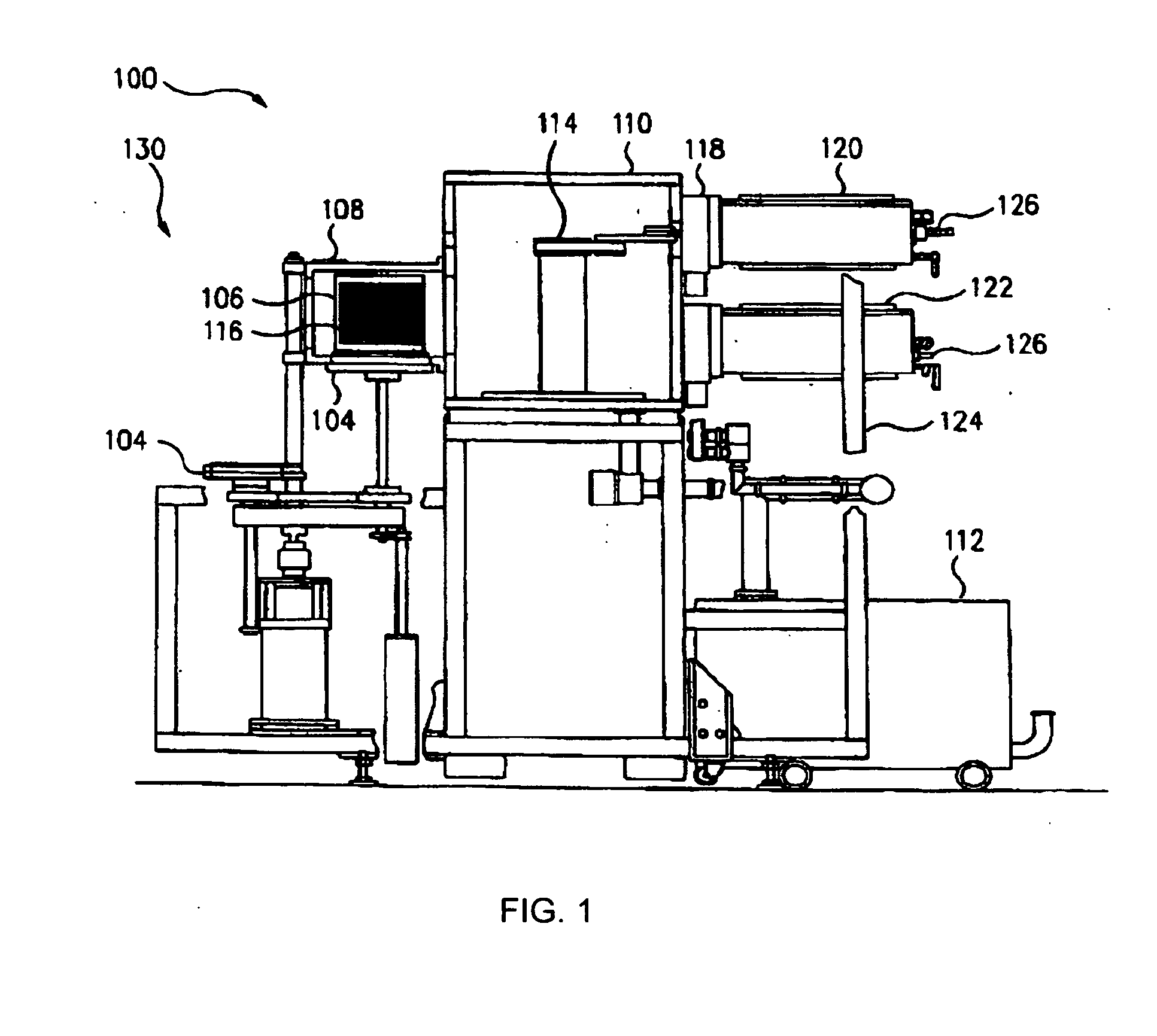Integrated ashing and implant annealing method using ozone
a technology of ion implantation and annealing method, which is applied in the field of semiconductor manufacturing methods, can solve the problems of low reactive gas available to the removal process, contaminating the substrate of the chemical bath that is needed to remove the resist, and affecting the effect of ion implantation annealing, so as to achieve the effect of reducing or eliminating the annealing process, reducing or eliminating the vacuum force, and reducing the amount of resis
- Summary
- Abstract
- Description
- Claims
- Application Information
AI Technical Summary
Benefits of technology
Problems solved by technology
Method used
Image
Examples
Embodiment Construction
[0031]FIG. 1 is a schematic illustration of a side view of one embodiment of a semiconductor wafer processing system 100 that establishes a representative environment of the present invention. Processing system 100 includes a loading station 130 which has multiple platforms 104 for supporting and moving a wafer cassette 106 up and into a loadlock 108. Wafer cassette 106 may be a removable cassette which is loaded into a platform 104, either manually or with automated guided vehicles (AGV). Wafer cassette 106 may also be a fixed cassette, in which case wafers are loaded onto cassette 106 using conventional atmospheric robots or loaders (not shown). Once wafer cassette 106 is inside loadlock 108, loadlock 108 and transfer chamber 110 are maintained at atmospheric pressure or else are pumped down to vacuum pressure using a pump 112. A robot 114 within transfer chamber 110 rotates toward loadlock 108 and picks up a wafer 116 from cassette 106. A reactor or thermal processing chamber 120...
PUM
 Login to View More
Login to View More Abstract
Description
Claims
Application Information
 Login to View More
Login to View More - R&D
- Intellectual Property
- Life Sciences
- Materials
- Tech Scout
- Unparalleled Data Quality
- Higher Quality Content
- 60% Fewer Hallucinations
Browse by: Latest US Patents, China's latest patents, Technical Efficacy Thesaurus, Application Domain, Technology Topic, Popular Technical Reports.
© 2025 PatSnap. All rights reserved.Legal|Privacy policy|Modern Slavery Act Transparency Statement|Sitemap|About US| Contact US: help@patsnap.com



